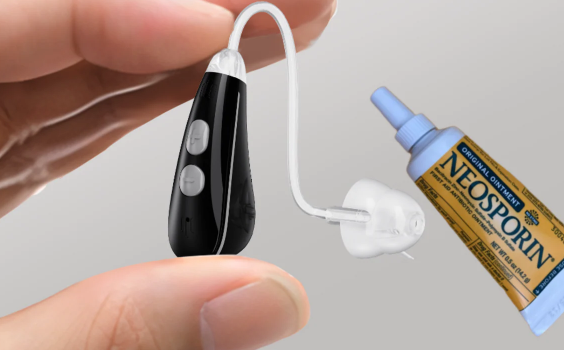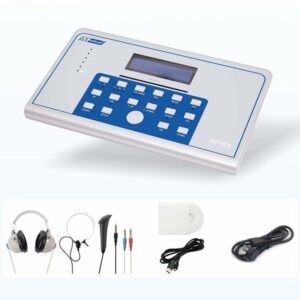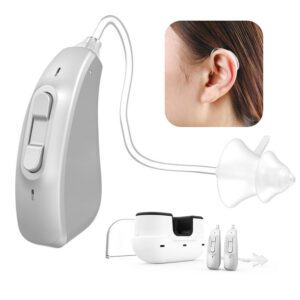hearing Aids play a vital role in improving daily communication and quality of life. The domes—the soft silicone tips that sit in your ear canal—are essential for comfort and sound quality. However, some users experience irritation, itching, or minor infections in the ear canal and wonder if applying Neosporin to their hearing Aid Domes might help. While this seems like a quick fix, it can actually create more problems than it solves.

What Are hearing Aid Domes?
The hearing aid dome is a soft, replaceable silicone part that fits over the end of a repaired-in-the-canal (RIC) or in-the-ear hearing aid. They help secure the hearing aid in the ear and ensure clear sound transmission. Because they sit deep in the ear canal, they’re exposed to earwax, moisture, and bacteria, making regular cleaning and replacement crucial.
What Is Neosporin and Why Do People Consider Using It?
Neosporin is a topical antibiotic ointment commonly used for minor cuts, scrapes, and skin infections. Some hearing aid users may think about applying it to domes for several reasons:
To reduce irritation or soreness caused by the domes rubbing against the ear canal.
To prevent or treat minor infections inside the ear.
To make the domes easier to insert by using the ointment as a lubricant.
At first glance, this may sound practical, but it is not recommended.
Risks of Using Neosporin in Hearing Aid Domes
Applying Neosporin to your hearing aid domes can lead to several risks:
Material Damage – The petroleum-based formula in Neosporin can degrade silicone domes, causing them to harden, crack, or wear out faster.
Hearing Aid Malfunction – Ointment can seep into the receiver or electronics, leading to clogs, moisture buildup, or permanent damage.
Ear Health Concerns – Ointment inside the ear canal may trap bacteria and block ventilation, potentially worsening irritation or infection.
Non-Medical Use – Hearing aids are not designed for use with medical ointments, and this can interfere with their intended performance.
Safe Alternatives for Ear Comfort
Instead of using Neosporin, try safer solutions designed specifically for hearing aid users:
Hearing aid lubricants – Special gels or sprays made for easy dome insertion without harming the material.
Moisturizing ear drops – Non-oily drops that relieve dryness and itchiness.
Regular dome replacement – Changing domes every 1–2 months reduces irritation and bacterial buildup.
Professional care – If you suspect an ear infection or ongoing discomfort, consult an ENT specialist for proper treatment.
Best Practices for Hearing Aid Dome Care
Clean domes daily with a soft cloth or hearing aid wipes.
Replace them on schedule or sooner if they appear worn.
Never use petroleum-based products, oils, or creams on domes.
Store hearing aids in a dry box or dehumidifier to prevent moisture damage.
Conclusion
So, can you use Neosporin in your hearing aid domes? The answer is no. While Neosporin is excellent for treating cuts and scrapes, it is not safe for use with hearing aids. It can damage your domes, harm your device, and potentially worsen ear problems. Instead, rely on hearing aid–safe lubricants, proper dome care, and professional medical advice when needed. By following safe practices, you can keep your hearing aids working effectively and your ears healthy.


